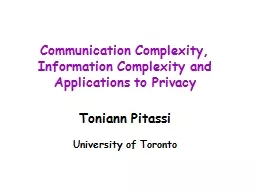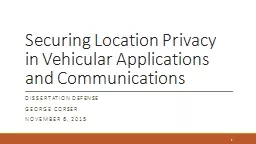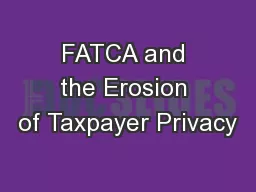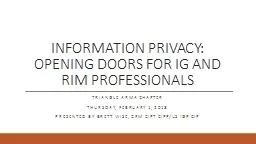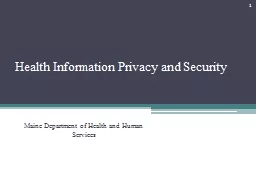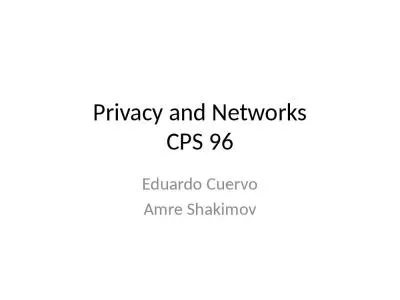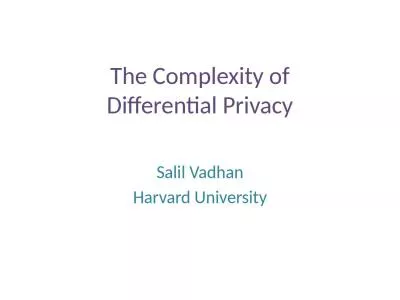PPT-Communication Complexity, Information Complexity and Applications to Privacy
Author : calandra-battersby | Published Date : 2018-10-30
Toniann Pitassi University of Toronto 2Party Communication Complexity Yao 2party communication each party has a dataset Goal is to compute a function fD A D
Presentation Embed Code
Download Presentation
Download Presentation The PPT/PDF document "Communication Complexity, Information Co..." is the property of its rightful owner. Permission is granted to download and print the materials on this website for personal, non-commercial use only, and to display it on your personal computer provided you do not modify the materials and that you retain all copyright notices contained in the materials. By downloading content from our website, you accept the terms of this agreement.
Communication Complexity, Information Complexity and Applications to Privacy: Transcript
Download Rules Of Document
"Communication Complexity, Information Complexity and Applications to Privacy"The content belongs to its owner. You may download and print it for personal use, without modification, and keep all copyright notices. By downloading, you agree to these terms.
Related Documents

